Congenital vertebral malformations are common in brachycephalic breeds, and can affect single or multiple vertebrae. They can be divided into four categories:
- Block vertebrae – where 2 or more vertebrae are partially or completely fused together due to failure of separation during embryological development.
- Hemivertebrae – where abnormal formation of the vertebral bodies leads to part of the vertebral body being missing, resulting in a triangular, wedge or butterfly shape rather than the normal square block shape. Hemivertebrae are often multiple and grouped at single or multiple sites. They can also result in an upward, downwards or sideways curvature of the spine.
- Transitional vertebrae – these are vertebrae that share characteristics with those from an adjacent vertebral segment. Many are incidental findings (e.g. a lumbar vertebra associated with a single rib), but those occurring at the lumbosacral junction can be associated with symptoms.
- Neural tube defects – failure of formation of the roof of the vertebra (a condition called spina bifida) which may be associated with spinal cord abnormalities.
Although many congenital vertebral abnormalities are incidental findings, they have the potential to cause a range of clinical symptoms, ranging from mild back pain to disc herniation and neurological impairment. Clinical signs seen are of chronic, progressive pain and limb weakness (usually the hind legs) and usually manifest during the growth phase (i.e. young dogs).
How common are these malformations?
There is a high prevalence (80-85%) of congenital malformations in the thoracic spine in brachycephalic breeds, with the most commonly affected vertebrae being in the mid-thoracic region.
- Hemivertebrae:
– A genetic mutation has been identified as a cause of in English bulldogs, French bulldogs & Boston terriers, but not in Pugs, and it has been suggested that there is an association with “screw-tails” and hemivertebrae.
– Various studies document a 78-93% prevalence in French Bulldogs.
– Though they occur less commonly in Pugs, they are more likely to cause symptoms if they are present.
- Pugs are genetically predisposed to lumbosacral transitional vertebrae.
- Spina bifida though uncommon, has been reported mainly in the lumbar vertebrae of English Bulldogs.
So what does it all mean? What are the abnormalities on my dog’s X-rays?
Normal vertebrae look like this:
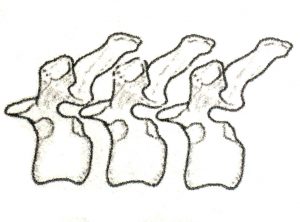
From most to least common, the types of malformation that we will document on your dog’s spinal X-rays are:
1. Short or ‘small block’ vertebrae – These are vertebral bodies of a normal shape but short length.
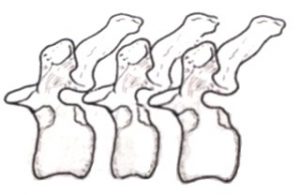
2. Butterfly vertebrae – These look like an inverse triangle that is not upwardly displaced.
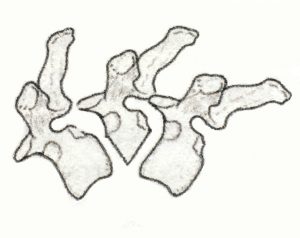
3. Ventral wedge vertebrae – Wedge-shaped vertebra, with the narrow part at the bottom of the vertebral body.
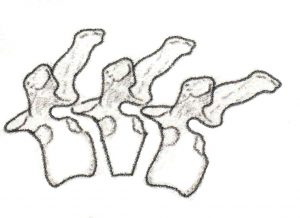
4. Dorsal hemivertebrae – These look like an inverse triangle, and are upwardly.
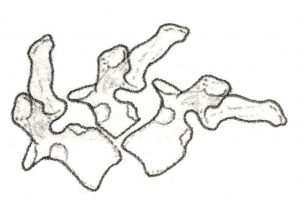
5. ‘Block’ or fused vertebrae.
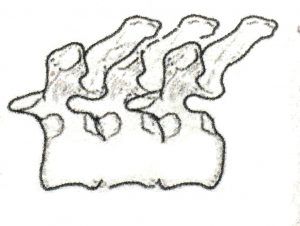
Lateral (on the side) vertebral defects that occur in humans are not documented in dogs, so would be considered an extremely rare likelihood to occur.
The less severe defects (short, butterfly and ventral wedge vertebrae) are common, and are far less likely to cause clinical signs.
Dorsal hemivertebrae are more severe defects, are more likely to cause abnormal curvature of the spine and be associated with neurological defects.
Defects in the upper and mid thoracic spine are a lower risk for problems, due to the muscle support around this area. Defects in the low thoracic and lumbar spine are more at risk of causing problems. Having said this, all defects are a potential ‘weak spot’ in the spine and can be a cause of low-grade back pain, disc prolapse and neurological signs, especially in dogs that do a lot of jumping. In essence, the greater the number of abnormal vertebrae and the more spinal curvature that your dog has, the higher the risk that symptoms may arise.
